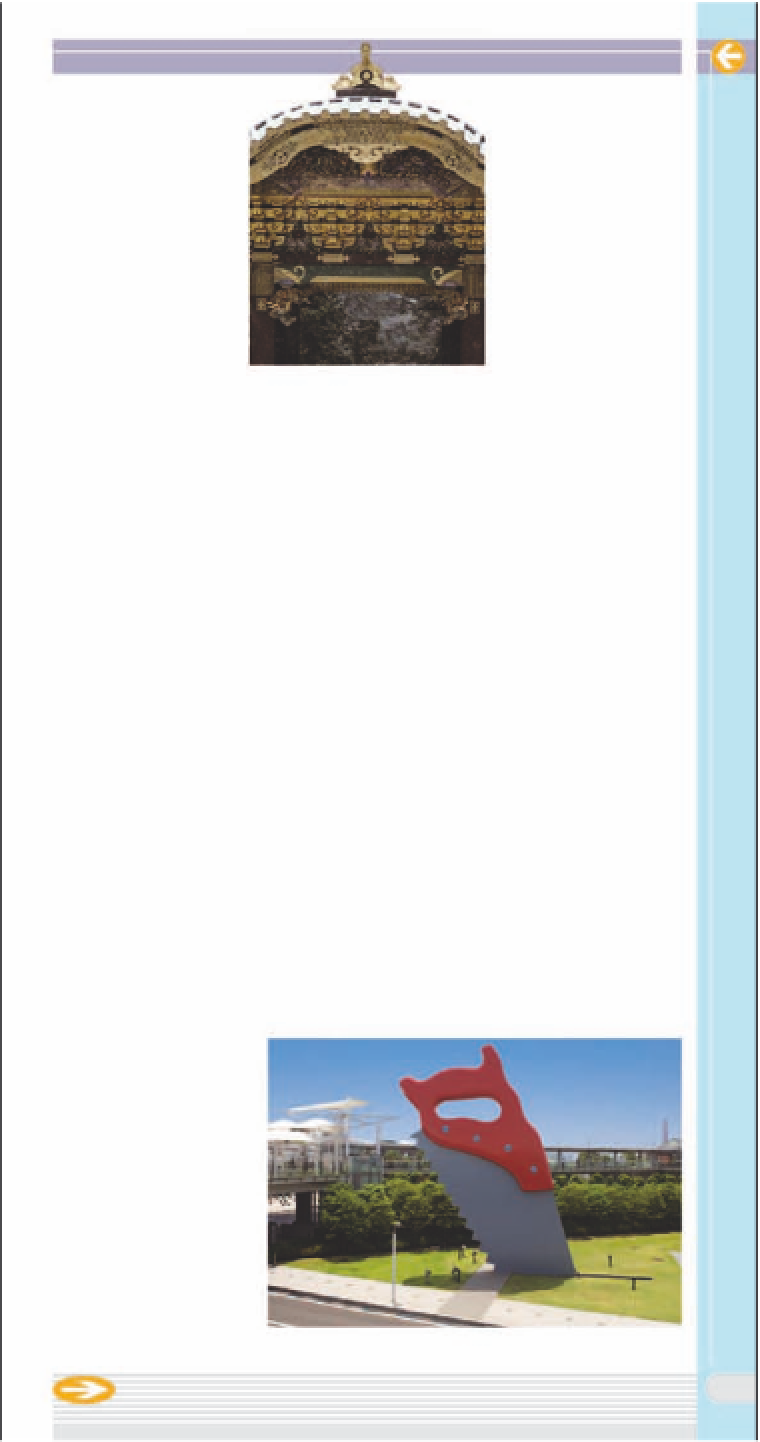Travel Reference
In-Depth Information
!
Nikko
its well-preserved
warehouses have
been converted into
stores, galleries, and
museums. Yamawa,
a ceramic store
housed in one of
these buildings, is a
fine example of the
architecture of these
fireproof godowns.
Toki no Kane, a
wooden bell tower
down a lane off the main street,
has become a symbol of the
town.
d
Map B2 • Kawagoe, Saitama
Prefecture • Tobu Toju line from Ikebukuro
Nikko's opulent
temples, religious
art, sacred store-
houses, and tombs
are more Rococo
than Zen. Chosen in
1617 as the burial
site of the shogun
Ieyasu, Toshogu
Shrine is a complex
of buildings and
mausoleums. It is
best accessed by the tree-lined
avenue leading to Rinno-ji Temple
with its thousand-armed Kannon
statue, and Gojuno-to, a five-
storied pagoda. Nikko's best-
known sight, the Yomei-mon gate
to Toshogu Shrine, is lavishly
painted and carved. Ieyasu's
tomb lies among the cedars a
little higher up a forest path.
d
Map B1 • Nikko, Tochigi Prefecture
• Tobu line from Asakusa • Open 8am-5pm
(Dec-Mar: 8am-4pm) • Adm
Toshogu Shrine, Nikko
$
Yokohama
A crucial Meiji-era foreign
settlement and port, this water-
front city consists of the huge
Minato Mirai complex, with an
amusement park, art museum,
shopping complex, and Japan's
tallest building - the Landmark
Plaza. Moored nearby is a fine
old clipper, the
Nippon Maru
.
The old houses of Yamate (a
former foreign residential area),
the restaurants and shopping
streets of Chinatown, silk and
doll museums, old customs
buildings, and a lovely Japanese
garden, the Sankein, make for a
full day.
d
Map B2 • Yokohama City
• JR Keihin Tohoku line from Tokyo;
Minato Mirai subway from Shibuya
@
Odaiba Island
The man-made island of
Odaiba presents a shift in time
and space with its experimental
structures, such as the Fuji TV
Building and Tokyo Big Sight. A
major hub of culture, shopping,
and entertainment, it has fashion-
able arcades and the cafés and
restaurants of Tokyo Decks.
Other highlights include a water-
front park, an artificial
beach, game centers,
and a maritime and
high-tech museum
(see pp28-9)
.
#
Kawagoe
Known as “Little
Edo,” Kawagoe once
prospered as a sup-
plier of goods for the
capital. Today, its main
draw is its high street,
Ichiban-gai. Many of
Sculpture at Tokyo Big Sight, Odaiba Island
109
The warehouses in Kawagoe are made from a mixture of plaster
and charcoal powder, giving their surfaces a shiny, black sheen.

































